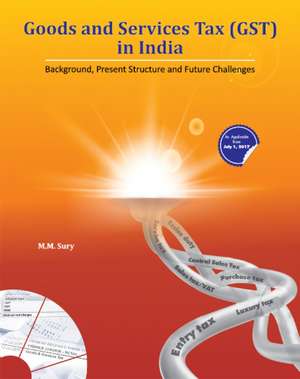Goods & Services Tax (GST) in India: Background, Present Structure & Future Challenges
Autor M. M. Suryen Limba Engleză Hardback – 2 aug 2017
Preț: 481.71 lei
Preț vechi: 535.77 lei
-10% Nou
Puncte Express: 723
Preț estimativ în valută:
92.18€ • 96.48$ • 76.72£
92.18€ • 96.48$ • 76.72£
Carte indisponibilă temporar
Doresc să fiu notificat când acest titlu va fi disponibil:
Se trimite...
Preluare comenzi: 021 569.72.76
Specificații
ISBN-13: 9788177084573
ISBN-10: 8177084577
Pagini: 246
Dimensiuni: 190 x 250 x 24 mm
Greutate: 0.79 kg
Editura: New Century Publications
Colecția New Century Publications (IND)
ISBN-10: 8177084577
Pagini: 246
Dimensiuni: 190 x 250 x 24 mm
Greutate: 0.79 kg
Editura: New Century Publications
Colecția New Century Publications (IND)
Cuprins
Taxation of Goods & Services: Conceptual Framework; Union Excise Duties, Modified Value Added Tax (MODVAT) & Central Value Added Tax (CENVAT); Taxation of Services by the Central Government; State Level Sales Tax/Value Added Tax (VAT); Problems Created by Multiple Taxation of Goods & States Exclusion from Taxing Services; Constitutional Provisions Pertaining to Taxes in India; Early Thoughts & Preparations for GST; Goods & Services Tax Council (GST Council); Meaning, Justification & Components of GST; Salient Features of GST; Working Mechanism of GST (With Illustrations); Exemptions, Threshold Limits & Rate Structure under GST; Administration of GST; Technological Infrastructure & Institutional Set-up for Implementing GST; Implications of GST for Various Sectors of the Indian Economy; GST & Fiscal Federalism; Future Challenges Facing GST; GST in Select Countries of the World; Index.
